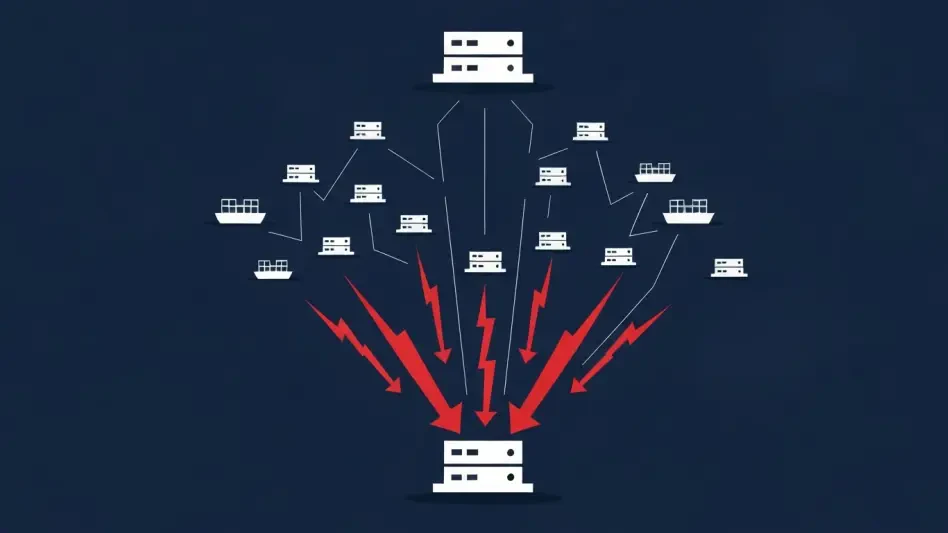What happens when a silent cyberattack cripples a nation’s power grid, leaving millions in the dark, with no immediate insight into the breach? This chilling possibility drives the urgency behind a transformative piece of legislation aimed at fortifying the United States against digital threats. As cyberattacks grow in sophistication, targeting critical infrastructure like pipelines and hospitals, the need for rapid response has never been clearer. By 2026, a groundbreaking law promises to reshape how these incidents are reported, ensuring that vulnerabilities are exposed before they spiral into catastrophes. This story delves into the heart of this pivotal change, exploring its implications for national security and industry alike.
The significance of this legislative shift cannot be overstated. With cyber threats escalating—evidenced by a 2023 FBI report noting a 38% surge in ransomware attacks on critical sectors—the U.S. faces a pressing need for transparency and coordination. The Cyber Incident Reporting for Critical Infrastructure Act of 2022, known as CIRCIA, stands as a cornerstone in this battle, mandating timely reporting of significant cyber incidents. Its impact reaches beyond mere compliance, aiming to create a unified front against digital adversaries by empowering the Cybersecurity and Infrastructure Security Agency (CISA) to act swiftly. This narrative unpacks how CIRCIA is set to redefine cybersecurity protocols in the coming years.
The Urgent Call for Cyber Incident Reporting
The stakes of cyber defense are vividly illustrated by past failures, such as the 2021 Colonial Pipeline attack, which halted fuel supplies across the East Coast for days. Incidents like these expose a critical gap: delayed or absent reporting can amplify damage, leaving other sectors blind to looming threats. This vulnerability in critical infrastructure—spanning energy, healthcare, and transportation—poses a direct risk to national stability, making the push for structured reporting a matter of urgency.
CIRCIA emerges as a direct response to these dangers, designed to close the information gap that often hinders rapid response. By establishing mandatory reporting protocols, the legislation seeks to ensure that no significant breach goes unnoticed, enabling authorities to mitigate risks in real time. The framework prioritizes visibility, turning isolated incidents into actionable intelligence for broader protection.
This urgency is not just theoretical; it reflects a growing consensus among policymakers and industry leaders that cybersecurity is a shared responsibility. As digital attacks become more frequent and severe, the need for a national strategy to track and respond to incidents has moved to the forefront of security discussions. CIRCIA represents a pivotal step in this direction, setting the stage for a more resilient future.
CIRCIA’s Foundation: Tackling an Evolving Cyber Threat
At its core, CIRCIA was born from the recognition that fragmented reporting undermines national defense against cyber threats. Signed into law in 2022, it tasks CISA with crafting clear, enforceable rules for critical infrastructure operators to disclose significant incidents. This mandate stems from high-profile breaches that revealed the devastating ripple effects of delayed information sharing, pushing lawmakers to act decisively.
The legislation’s purpose is rooted in real-world catalysts, with events like major ransomware attacks highlighting the need for speed. By requiring notifications within tight timelines, CIRCIA aims to equip CISA with the data needed to identify patterns and warn other potential targets. This proactive stance is essential in a landscape where cybercriminals adapt quickly, exploiting vulnerabilities across interconnected systems.
Beyond immediate response, the broader goal is to strengthen national security through a cohesive approach. The law acknowledges that isolated efforts are no longer sufficient against sophisticated adversaries. Instead, it fosters a system where shared knowledge becomes a powerful tool, aiming to outpace threats through collaboration and transparency by the target year of 2026.
Core Elements Driving CIRCIA’s Reporting Revolution
CIRCIA’s framework rests on several key components that will transform how cyber incidents are handled by next year. First, mandatory timelines demand that operators report significant breaches within 72 hours and ransomware payments within 24 hours, a stark contrast to past delays that worsened crises. For instance, slower reporting in historical cases often allowed attackers to strike additional targets before defenses could be raised.
Another critical aspect is CISA’s expanded oversight authority, which enables the agency to request information on unreported incidents. This power ensures accountability, preventing entities from sidestepping obligations that could jeopardize wider safety. It positions CISA as a central coordinator, capable of enforcing compliance while building a comprehensive threat database.
Finally, a delicate balance is struck between regulation and practicality, as CISA works to minimize burdens on industry. Feedback gathered during a public comment period earlier this year revealed concerns over duplicative rules, prompting the agency to refine its approach. This effort to align with congressional intent while addressing stakeholder input underscores a commitment to effective, streamlined reporting mechanisms.
Stakeholder Perspectives on Shaping CIRCIA’s Path
Insights from those directly involved in CIRCIA’s development reveal a shared dedication to getting it right. Marci McCarthy, CISA’s director of public affairs, emphasized the agency’s focus on collaboration, stating, “Stakeholder feedback is vital to crafting a rule that strengthens security without overwhelming operators.” This reflects an ongoing dialogue aimed at practical implementation.
Lawmakers also weigh in on the timeline leading to 2026, with House Homeland Security Chairman Andrew Garbarino advocating for thorough input from the private sector. He noted, “The extended period allows us to ensure the regulation matches both legislative goals and operational realities.” His stance highlights the importance of precision in rulemaking to avoid unintended consequences.
Industry voices, such as Leopold Wildenauer from the Information Technology Industry Council, echo this sentiment, pushing for alignment across federal regulations. “Streamlined reporting can enhance outcomes if CISA uses this time to refine the process,” Wildenauer remarked. Combined with discussions from a recent House Committee hearing, these perspectives paint a picture of joint efforts to fortify defenses while respecting industry constraints.
Preparing for CIRCIActionable Strategies for Operators
With the deadline approaching, critical infrastructure operators must take concrete steps to align with CIRCIA’s forthcoming rules. Developing internal systems to meet the 72-hour incident and 24-hour ransomware payment reporting windows is a priority. This means investing in monitoring tools and training staff to detect and document breaches swiftly, ensuring no delay in notification.
Engagement with CISA during public comment periods offers another vital opportunity to influence the final regulations. Operators can provide insights into operational challenges, helping shape rules that are both effective and feasible. This proactive involvement ensures that the resulting framework accounts for real-world conditions faced by diverse sectors.
Additionally, aligning current cybersecurity practices with anticipated requirements can prevent future redundancy. By mapping existing protocols against other federal mandates, entities can streamline compliance efforts, reducing overlap. Such preparation not only aids adherence but also contributes to collective resilience, reinforcing the nation’s cyber defenses as the 2026 milestone nears.
Reflecting on a Collaborative Journey
Looking back, the journey toward CIRCIA’s implementation reveals a profound commitment to safeguarding critical infrastructure through shared responsibility. The urgency of past cyber incidents has underscored the need for rapid reporting, while stakeholder collaboration has shaped a framework aiming for both security and practicality. Each step, from legislative inception to public feedback, has built a foundation for stronger defenses.
The dialogue between government and industry has proven instrumental, ensuring that diverse perspectives guide the process. CISA’s responsiveness to concerns about regulatory burden has balanced the push for transparency with operational realities. This careful calibration has set a precedent for how complex challenges can be met with unity and precision.
Moving forward, operators are encouraged to maintain active engagement with CISA, refining internal systems to meet reporting demands. Policymakers and industry leaders alike need to prioritize harmonization across regulations, avoiding conflicts that could dilute effectiveness. As the deadline looms, sustained focus on actionable preparedness promises to transform CIRCIA from a mandate into a cornerstone of national cyber resilience.








